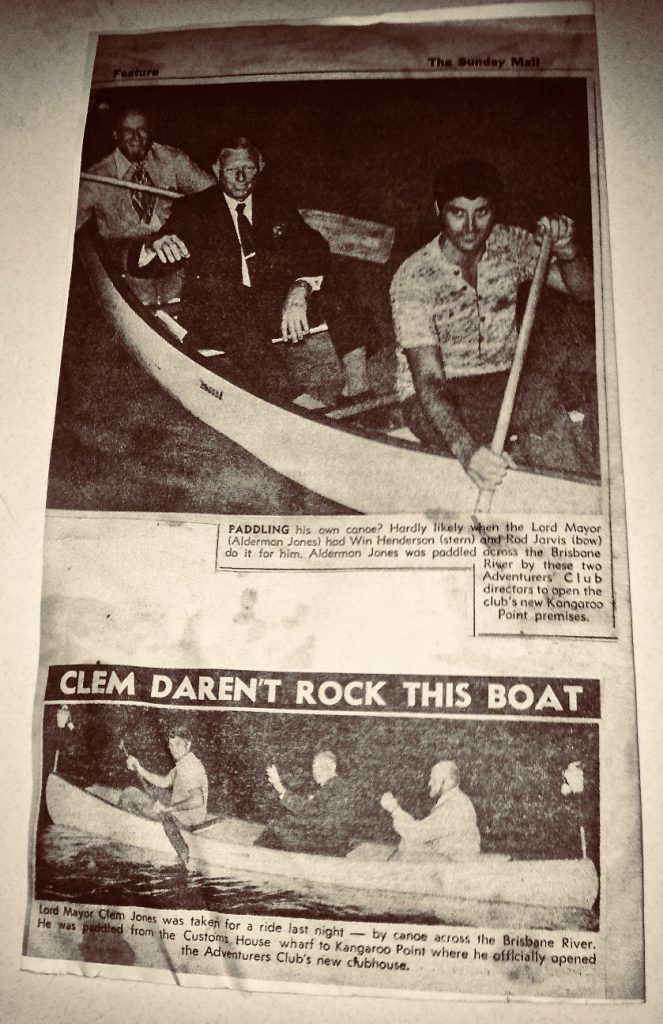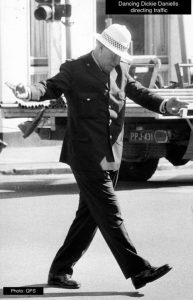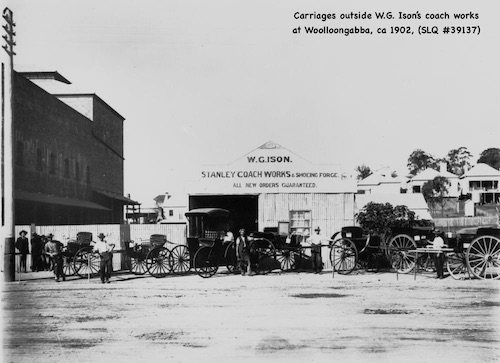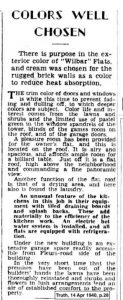DANCING DICKIE DANIELLS (Sergeant Richard Daniells) was a well-known policeman who regularly directed traffic at the Fiveways in the 1960s.

“The art of directing traffic has been an integral part of police training since the 1920s. A number of officers took to the task with great flair. DANCING DICKIE DANIELLS was well known for his flamboyant style. Many people remember seeing him on Brisbane Streets, dancing his way around the traffic points.”
(Source: QPS media)
He became a legend among commuters. Here are some comments about him:
Sue H: People used to go to the Fiveways just to watch him. He was fantastic.
Joyce G: My husband had a BSA Road Rocket when we were dating and he used to go through his go signals with a bit of throttle and he would yell out —Good on you mate ” he was fantastic on the Point Duty he sure got the traffic through.
Greg T: Dancing Dickie also “danced” on the corner of Gipps and Ann sts. Northern end of the Story Bridge….
Ray T: We saw him here, we saw him there, we saw him almost everywhere!
Sandi H: I remember him very well!! Used to look out for him every time my bus passed through Woolloongabba every morning and early evening. He certainly controlled the five corners expertly and was a real joy to watch! Traffic lights now, how boring!
Ray G: When I first started work in 1951 I used to ride my push bike into the city, as a lot of teenagers did. When it was Logan Road’s turn to go, Sgt.Dickie Daniels would say ” Okay boys, see who is first to the next corner”, and we would pedal like blazes and make a race of it; and when he was on duty on the city end of the Victoria Bridge he would do the same and we would race to be first into Elizabeth St.
Marie A: He knew most people as they drove past yes, he is a legend.
Pip C: I remember him well. I loved watching him. What happened to the dear man?














